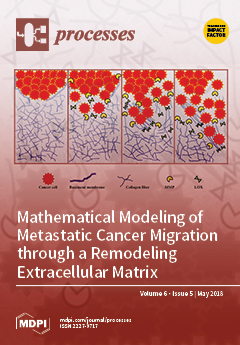A lab-scale of a side stream anaerobic membrane bioreactor (AnMBR) equipped with a tubular membrane operated at the mesophilic temperature of 37.0 ± 1.2 °C for treating domestic wastewater was tested to investigate its performance and fouling characteristics at two organic loading rates (OLR) of 0.25 kg COD m
−3d
−1, and 0.70 kg COD m
−3d
−1, respectively. The AnMBR was operated for 600 days at sludge retention time (SRT) of 100 days. This AnMBR exhibits excellent chemical oxygen demand (COD) removal of 91% at 0.25 kg COD m
−3d
−1, and 94% at 0.7 kg COD m
−3d
−1 respectively, with effluent-soluble COD below 50 mg/L. Chemically-enhanced cleaning method using NaOH, NaOCl, and citric acid solution were introduced for fouling investigation at these two stages. The results showed that sequential chemical cleaning of alkaline and acid were most effective to recover the membrane flux. The alkaline cleaning was effective at removing organic foulants, while citric acid cleaning was effective at removing the scalants. The analyses of the excitation emission matrix, gel permeation chromatography, and extracellular polymeric substances indicated that major components of membrane foulants were proteins, carbohydrates, humic, and fulvic acids. At 0.25 kg COD m
−3d
−1, organic fouling was more prone to be trapped in the cake layers and responsible for membrane pore blockage, inorganic fouling exhibited marginal contribution to the membrane fouling behavior. However, at 0.70 kg COD m
−3d
−1, high concentrations of organic and inorganic foulants supported an essential role of organic and inorganic fouling on membrane fouling behavior.
Full article





